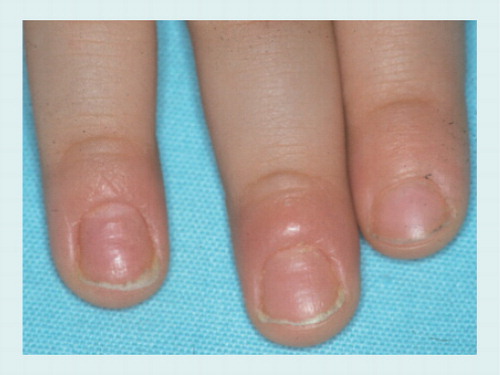Figures & data
Mild erythema and scaling.

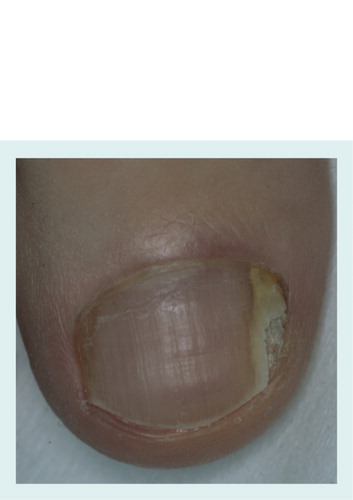

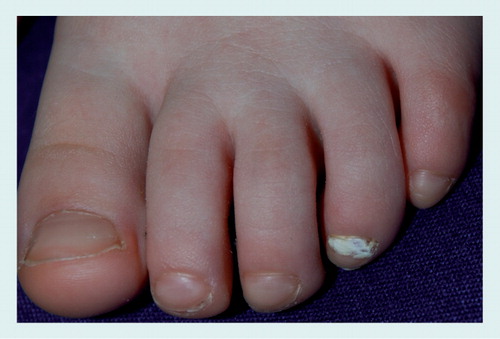
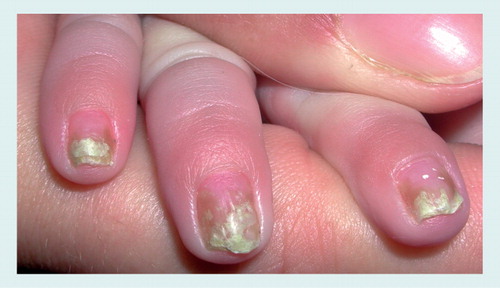
Differential diagnosis with distal subungual onychomycosis requires mycology.
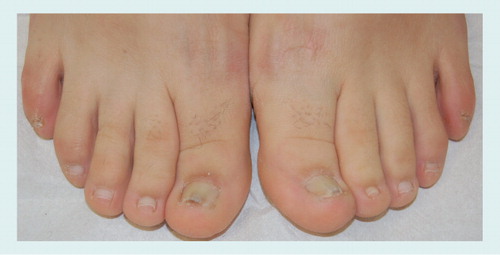
Nail lesions in a 7-year-old boy. All nails show mild thickening with distal onycholysis and subungual hyperkeratosis.
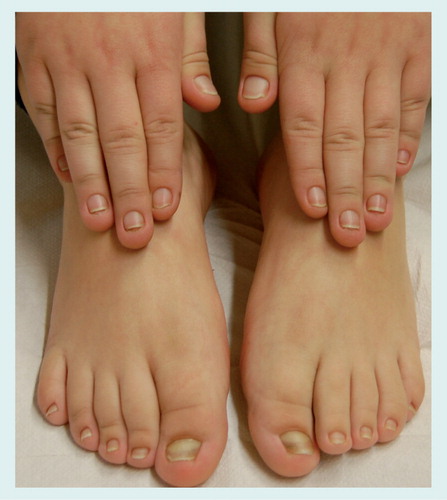

Diffuse crumbling of the nail plate.
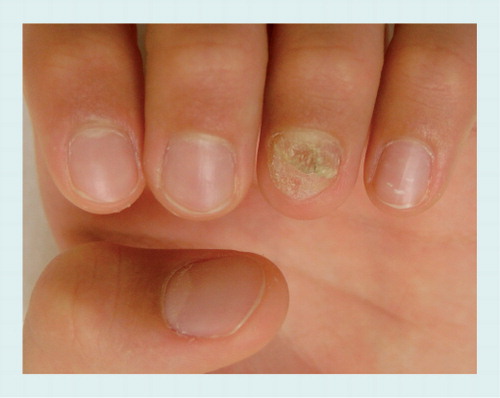
Onycholysis with erythematous border and splinter hemorrhages.
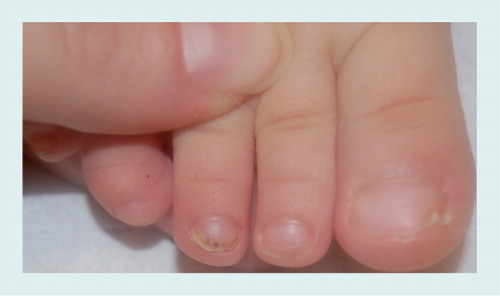
A single fingernail showing mild subungual hyperkeratosis and onycholysis, associated with periungual scaling. Note traumatic punctate leukonychia of the fifth fingernail.
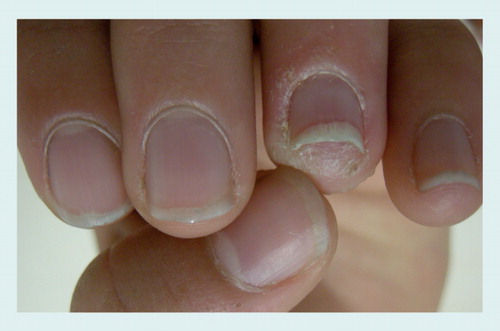

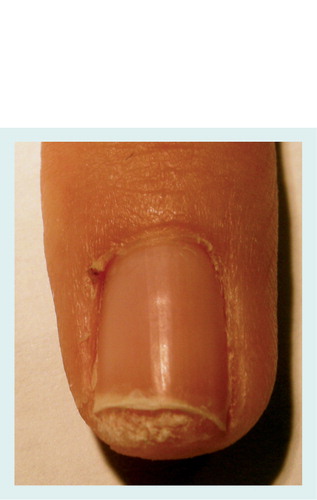
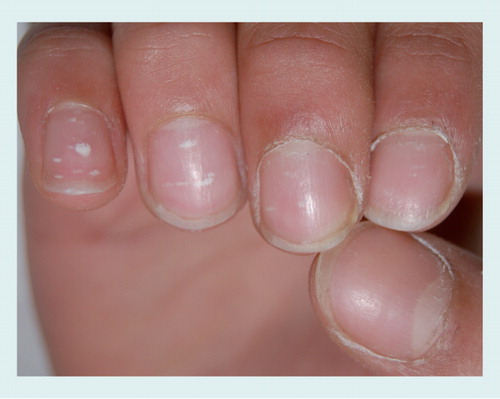
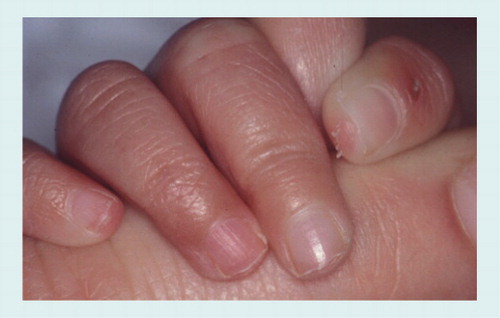
Isolation of Candida indicates secondary colonization and not primary invasion.
